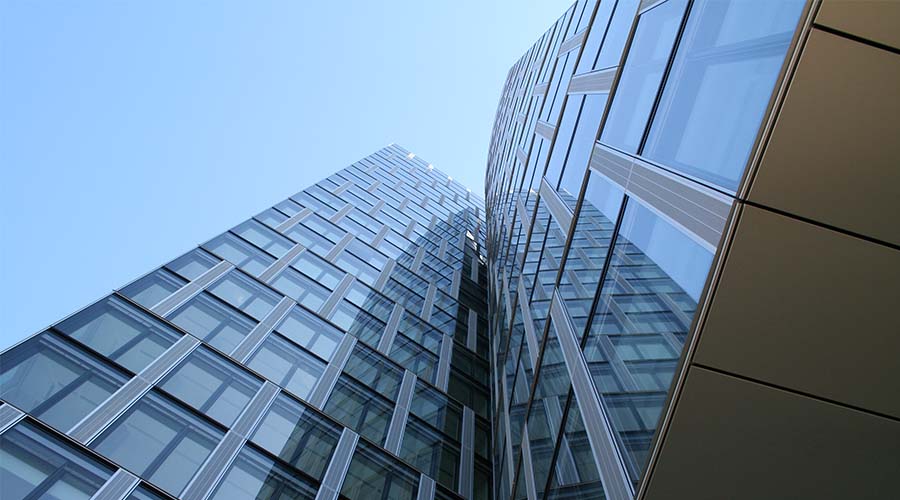
Curtain wall systems are a type of structure glazing system commonly used in modern architecture to create large, non-load-bearing exterior walls. These systems consist of glass panels held in place by a lightweight aluminum or steel frame, attached to the building structure. Curtain walls are designed to withstand wind loads, seismic forces, and other environmental factors while providing aesthetic appeal and allowing natural light into the building interior.
There are several types of curtain wall systems, each with its own design and performance characteristics. Some common types include:
Curtain Wall with a Pressure Plate and Cap System
A curtain wall with a pressure plate and cap system is a type of facade construction method commonly used in modern buildings. This system provides a secure and efficient way to install and weatherproof glass panels within the curtain wall framework.
In summary, a curtain wall with a pressure plate and cap system offers a versatile, efficient, and aesthetically pleasing solution for creating modern and transparent building facades while providing superior weather resistance and durability.
Stick System
In this system, individual framing members (sticks) are assembled and installed on-site. Glass panels are then inserted into the framing to create the curtain wall. Stick systems offer flexibility in design and are suitable for buildings with complex shapes or irregular facades.
In summary, the stick system is a popular method for constructing curtain walls, offering flexibility in design and ease of installation. However, it requires careful attention to detail during installation to ensure weather tightness and structural integrity.
Semi-Unitized System
A semi-unitized glazing system is a type of curtain wall system used in building facades, particularly in high-rise and commercial buildings. It combines elements of both unitized and stick-built curtain wall systems, offering advantages in terms of installation efficiency, performance, and aesthetics.
Overall, semi-unitized glazing systems offer a balance of efficiency, performance, and aesthetics, making them a popular choice for modern building facades. By combining the benefits of prefabrication with on-site customization, these systems provide architects and developers with versatile solutions for creating visually striking and functional exteriors.
Unitized System
Unitized curtain wall systems consist of pre-fabricated panels that are assembled and glazed in a factory-controlled environment. These panels are then transported to the construction site and installed as complete units. Unitized systems are faster to install and offer improved quality control compared to stick and semi-unitized systems.Overall, unitized curtain wall systems offer an efficient, high-quality, and aesthetically pleasing solution for modern building facades, providing architects, developers, and building owners with a versatile option for creating visually striking and functional exteriors.
Overall, unitized curtain wall systems offer an efficient, high-quality, and aesthetically pleasing solution for modern building facades, providing architects, developers, and building owners with a versatile option for creating visually striking and functional exteriors.
Spider System
Spider curtain wall systems use point-fixed glass panels that are connected to the building structure using stainless steel fittings or cables. This system creates a minimalistic appearance with maximum transparency, making it ideal for modern and high-end architectural designs.
Overall, spider systems offer a sleek, contemporary, and visually striking solution for building facades, providing architects and designers with a versatile option for creating transparent and aesthetically appealing exteriors.
Double Skin Facade
Double skin facade curtain wall systems consist of two layers of glass separated by an air cavity. The outer layer protects the building from weather elements, while the inner layer provides thermal insulation and soundproofing. This system improves energy efficiency and indoor comfort while enhancing the aesthetic appeal of the building.
Overall, double skin facade systems offer a range of benefits in terms of energy efficiency, occupant comfort, and architectural design, making them a popular choice for sustainable and high-performance buildings in various climates and contexts. However, careful consideration of design, construction, and maintenance factors is essential to ensure the successful implementation and long-term performance of these systems.
Fire-Resistant Façade systems
A fire-resistant facade system is designed to prevent the spread of fire within a building and to protect the building's occupants, neighboring structures, and emergency responders. These systems are particularly important in high-rise buildings, commercial complexes, and other structures where the risk of fire spread is a concern.
Overall, fire-resistant facade systems play a critical role in ensuring the safety and resilience of buildings in the event of a fire. By incorporating fire-resistant materials, barriers, seals, and active fire protection measures, these systems help contain fire outbreaks, protect occupants, and minimize property damage.
Blast-Resistant facade System
These curtain wall systems are designed to withstand blast loads resulting from explosions. They incorporate specialized glass panels, framing systems, and anchorage details to mitigate the effects of an explosion and protect the building occupants.
Each type of curtain wall system offers unique advantages and is selected based on factors such as architectural design, building function, environmental conditions, and budget constraints. Ultimately, the choice of curtain wall system depends on the specific requirements and goals of the building project.
Bullet-Resistant Façade systems
A bullet-resistant facade system, also known as a bulletproof or ballistic-resistant facade system, is designed to provide protection against ballistic threats such as bullets and projectiles. These systems are commonly used in buildings that require heightened security measures, such as government buildings, embassies, banks, and military facilities.
Overall, bullet-resistant facade systems provide a critical layer of protection against ballistic threats in high-risk environments, helping to safeguard buildings, assets, and occupants from potential harm. Proper design, testing, installation, and maintenance are essential to ensure the effectiveness and reliability of these systems in real-world scenarios.
- All Services
- Curtain Wall Facade Systems
- Point-Fixed Glass Facade Systems
- Skylights, Roofing And Canopy Systems
- Automatic Doors & Store Front Systems
- Facade Cladding Systems
- Aluminium Doors And Windows Systems
- Facade Sun Control Louvers And Fin Systems
- Custom facade Remodeling
- Facade Design-Build Services
- Facade GlazingShop Drawing, Calculation and Wind Load Analysis Services